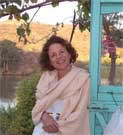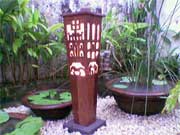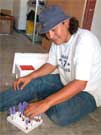By ELIZABETH PISANI, ASIA TIMES
766 words
26 June 1996
<
Asia Times
English
(c) 1996 Chamber World Network International Ltd
When Laos put the plug in its first large hydroelectric dam in 1972, engineers forgot to cut down trees in the areas that were to be flooded.
This created a headache for dam operators - the rotting vegetation sucked oxygen out of the water and blocked up turbines - and an opportunity for enterprising businessmen. More than two decades later, frogmen still sink to the reservoir floor with underwater chain saws to cut wood.
This time, in planning the Nam Theun 2 project that will flood 450 square kilometers of forest land, the government is trying to make things easier. A military-owned company, the Mountainous Area Development Group (known by its Lao initials BPKP), has been given the task of clearing the reservoir area before it becomes a lake.
The logging deal is meant to give the company funds to help stop slash-and-burn farming and improve the often dismal lot of ethnic minorities in remote areas, said BPKP's first vice-president, Maydom Chanthanasinh.
"At the moment, people have no choice. One way the tree dies, but the other way they themselves die," Maydom said. BPKP wants to resettle people where they can have a permanent income.
To help the company foot the bill for its rural development work, the government has given it rights over natural resources in a gargantuan 1.7 million hectare area that covers much of central Laos. Its brief is to exploit sites slated for developments such as dams, roads, irrigated paddy fields or power lines.
BPKP has mining and quarrying interests and is one of the country's biggest construction companies, but logging and wood processing bring in the bulk of its US$50 million a year turnover. The forest on the Nakai plateau, which will become a lake if the Nam Theun 2 dam gets built, already provides a fair bit of that.
BPKP said it was exporting about 50,000 cubic meters a year of raw pine off the plateau, at an average price of US$105 per meter at the forest log yard. Top grades fetch more than four times as much.
Products of the company's five wood factories, parquet flooring for instance, bring up to US$1,800 per cubic meter in the Japanese market.
Maydom estimated there were about one million cubic meters still in the reservoir area, and hoped the company would have cleared that within five years. That should be long enough to turn a profit on the US$7 million chipboard factory expected to come on stream on the plateau this year, he said.
Stocked wood should keep the factory going for another three years after that. Maydom dismissed fears the company would be tempted to get more out of its investment by feeding the factory with logs cut from the protected catchment area.
"There are so many projects," he said breezily. "When we are finished at Nam Theun 2 we will just get another reservoir."
Dam developers hope to wean BPKP away from logging watershed areas by offering them contract work on the dam. Already the company is building a 150-kilometer access road at a cost of about US$150,000 per kilometer, according to Maydom.
That means much of the money now earned from wood exports pays for imports of heavy machinery for road building. "We would like to borrow money but we have no credibility," Maydom said.
The company said it was now short of the cash needed to resettle the 980 families in the reservoir area.
"We have a project, but it is over a 10 or 15-year period. If they want us to speed it up, that's fine, but please contribute," Maydom said, estimating that to move everyone out of the reservoir area in the next six years or so would cost US$2 million a year.
So far, BPKP has resettled 51 families in the Nakai plateau area, employing most of them on salaries to go and clear forest from the reservoir area.
The desire to stop destructive agriculture is not entirely altruistic. "You can't calculate the value of the forest they destroy. One family might destroy one hectare, with (tree) species in it that are worth US$1,000 a cubic meter. They just burn it and grow rice worth US$300," Maydom said with some annoyance. "We would prefer just to give them the rice free of charge and have them leave the trees for us."
Copyright 1996 Asia Times.
(c) 1996 Chamber World Network International Ltd.




